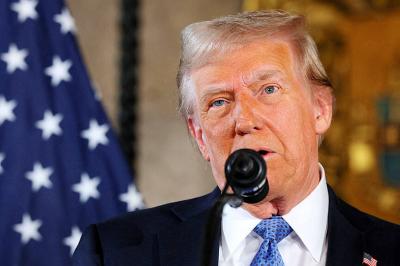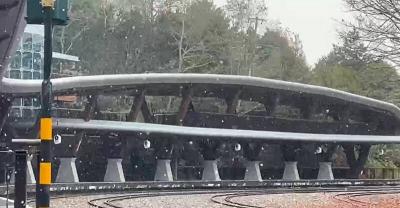Remembering the past while looking forward to the future, about a dozen former democracy activists gathered in Taipei yesterday to commemorate the 35th anniversary of the Formosa Incident, saying that they are optimistic about the future of Taiwan’s democracy because of recent pro-democracy movements.
The Formosa Incident, also known as the Kaohsiung Incident, involved an anti-government demonstration organized by Formosa Magazine on Dec. 10, 1979. Intended as a march in honor of International Human Rights Day, the event turned violent when members of the crowd unknown to the organizers — and widely believed to have been agents provocateurs — began attacking police. The Chinese Nationalist Party (KMT) government court-martialed and jailed eight activists, who became known as the Kaohsiung Eight.
Speaking at an event in Taipei to commemorate the Incident, and to launch a book on it, former Democratic Progressive Party (DPP) chairman Hsu Hsin-liang (許信良) said that while it is still hard to foresee the outcome of the social movements — including the Sunflower movement, the demonstrations for human rights in military and several other movements for environmental or development issues — he is certain that they will bring about positive reforms to Taiwan’s democracy.

Photo: Liu Hsin-de, Taipei Times
“Most of what we pursued in the pro-democracy movements in the 1970s — such as direct election of the president — came to pass in the 1990s, so I’m sure that the problems facing this generation and which led to the recent social movements will be solved in a few decades, even though we may not foresee what will happen in the end,” Hsu told the audience.
“Issues facing Taiwan today — such as unequal distribution of wealth, cross-strait relations, and economic recession — exist because government leaders in the past two decades never thought about these issues, and therefore it’s natural that the civil society would want reforms,” Hsu said. “I’m optimistic that Taiwan’s democracy will deepen, and we should develop a Western European style of democracy.”
One of the Kaohsiung Eight — Shih Ming-te (施明德), lashed out against President Ma Ying-jeou’s (馬英九) leadership, saying that under Ma, the nation has lost its direction, and that Ma does not know how to handle cross-strait relations well, deals with the economy poorly and actively develops excessively close ties with large corporations.
Former vice president Annette Lu (呂秀蓮), who was another of the eight, thanked the public for remembering the pro-democracy activists of the past.
“I feel honored that we are still remembered,” Lu said. “The meaning behind remembering the Formosa Incident today is to pass on the value that we should always try to light up the world when it’s dark, and we should make it a value instilled in every Taiwanese.”
“No matter how we look forward to the future, we shall remember the past, for those without a sense of history cannot create the future,” she added.

US President Donald Trump said "it’s up to" Chinese President Xi Jinping (習近平) what China does on Taiwan, but that he would be "very unhappy" with a change in the "status quo," the New York Times said in an interview published yesterday. Xi "considers it to be a part of China, and that’s up to him what he’s going to be doing," Trump told the newspaper on Wednesday. "But I’ve expressed to him that I would be very unhappy if he did that, and I don’t think he’ll do that," he added. "I hope he doesn’t do that." Trump made the comments in

NOT AN OPENING: Trump’s violation of international law does not affect China’s consideration in attacking Taiwan; Beijing lacks capability, not precedent, an official said Taiwanese officials see the US’ capture of the president of Venezuela as a powerful deterrent to Beijing’s aggression and a timely reminder of the US’ ability to defeat militaries equipped with Chinese-made weapons. The strikes that toppled Venezuelan President Nicolas Maduro signaled to authoritarian leaders, including Chinese President Xi Jinping (習近平), US President Donald Trump’s willingness to use military might for international affairs core to US interests, one senior official in Taipei’s security circle said. That reassured Taiwan, the person said. Taipei has also dismissed the idea that Trump’s apparent violation of international law could embolden Beijing, said the official, who was not

A cold surge advisory was today issued for 18 cities and counties across Taiwan, with temperatures of below 10°C forecast during the day and into tonight, the Central Weather Administration (CWA) said. New Taipei City, Taipei, Taoyuan and Hsinchu, Miaoli and Yilan counties are expected to experience sustained temperatures of 10°C or lower, the CWA said. Temperatures are likely to temporarily drop below 10°C in most other areas, except Taitung, Pingtung, Penghu and Lienchiang (Matsu) counties, CWA data showed. The cold weather is being caused by a strong continental cold air mass, combined with radiative cooling, a process in which heat escapes from

Snow this morning fell on Alishan for the first time in seven years, as a strong continental cold air mass sent temperatures plunging across Taiwan, the Central Weather Administration (CWA) said. The Alishan weather station, located at an elevation of about 2,200m in central Taiwan, recorded snowfall from 8:55am to 9:15am, when the temperature dropped to about 1°C, the CWA said. With increased moisture and low temperatures in the high-altitude Alishan area, the conditions were favorable for snow, CWA forecaster Tsai Yi-chi (蔡伊其) said. The last time snow fell at the Alishan weather station was on Jan. 10, 2018, while graupel fell there